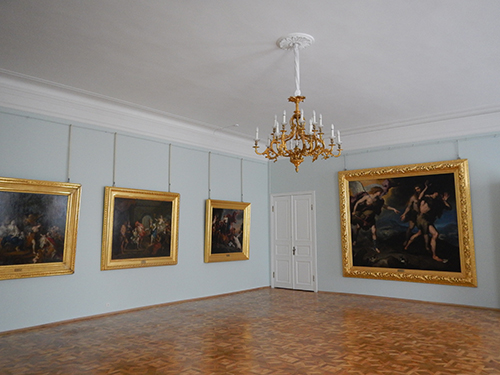Western European Painting

Collecting paintings and objects of decorative arts was in vogue amidst Russian aristocracy ever since the reign of Emperor Peter I. There was a great demand for Western European paintings. European pictures formed the core of Russian palace collections throughout the 18th century.
The collection of paintings at the Gatchina Palace was begun by Count Grigory Orlov. The collection expanded with new additions by each successive owner. Thus, by 1917 the Gatchina holdings had grown to become one of the most extensive in Russia, consisting of over 3000 paintings.
The gallery features work of the 17th and 18th century European masters, some of the pictures come from the original collection which were acquired by the palace�s initial owners. Expulsion from Paradise by Luca Giordanno is from the Count Orlov�s collection, while Still Lives by Luca Forte belonged to Emperor Paul I and Empress Maria Feodorovna. On view are genres characteristic of European art in the Early Modern period such as battle scenes, stories from the Holy Scriptures, still-lives, events from classical history, and allegorical scenes.
See on interactive plan

Collecting paintings and objects of decorative arts was in vogue amidst Russian aristocracy ever since the reign of Emperor Peter I. There was a great demand for Western European paintings. European pictures formed the core of Russian palace collections throughout the 18th century.
The collection of paintings at the Gatchina Palace was begun by Count Grigory Orlov. The collection expanded with new additions by each successive owner. Thus, by 1917 the Gatchina holdings had grown to become one of the most extensive in Russia, consisting of over 3000 paintings.
The gallery features work of the 17th and 18th century European masters, some of the pictures come from the original collection which were acquired by the palace�s initial owners. Expulsion from Paradise by Luca Giordanno is from the Count Orlov�s collection, while Still Lives by Luca Forte belonged to Emperor Paul I and Empress Maria Feodorovna. On view are genres characteristic of European art in the Early Modern period such as battle scenes, stories from the Holy Scriptures, still-lives, events from classical history, and allegorical scenes.
See on interactive plan
